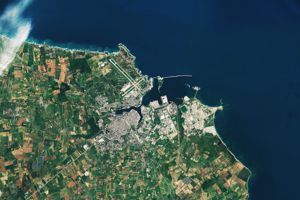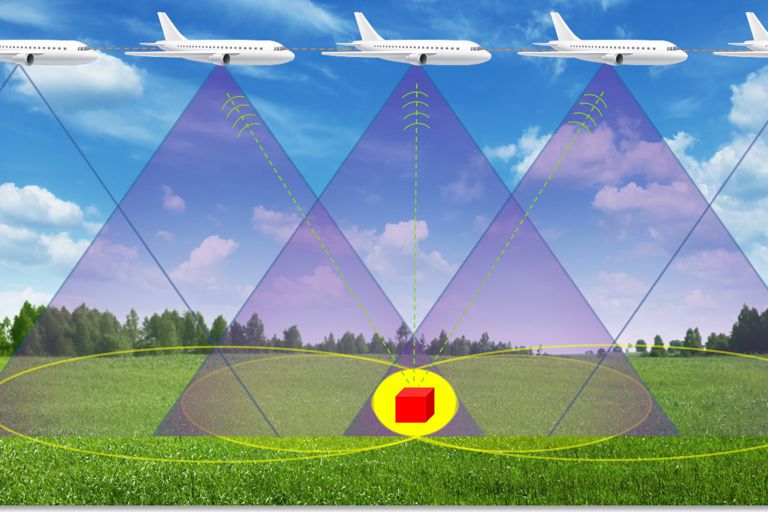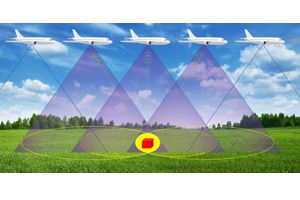Synthetic Aperture Radar (SAR) Overview
|
 |
 |
“GSI’s APU application brings new potential to the field of accelerating SAR image construction.”
Avidan Akerib—Vice President, Associate Computing Business Unit at GSI Technology |
In Synthetic Aperture Radar (SAR), microwave transmissions done from airplanes or satellites that are moving are used to map fixed grid locations on the ground.
Each input pulse will apply differently to a matrix or tile composition of the grid picture. Multiple grids or tiles can also be processed from the same input pulse as a sort of moving jpeg map.
In traditional processing of SAR, the input data is shaped, stored by fixed grid locations, and then processed in parallel to generate pixel-by-pixel for different grids.
This allows efficient use of large datacenter resources, but cannot be done in real time.
GSI’s APU is Optimal for SAR FBP Compute
|
In-Memory Compute—Improving BW, Reducing Power for SAR
GSI’s APU can apply each input pulse simultaneously to generate all pixels in the grid(s) in parallel.
Compared to a GPU core, which works pixel-by-pixel, sequentially
|
 |
 |
Flexible Precision—For Real Time Optimization
GSI’s APU is a flexible bit processor that can be adapted to keep accuracy while working on flexible precision at any step of the flow. For example, FFT can be done on 8-16 bits, but non-linear function, such as square root, requires 40-50 bits. This technique keeps the highest accuracy, as well as the highest optimized solution.
GPUs are adapted for 32/64-bit float that is not needed in most cases—this slows the processes and increases power.
|
| Non-Linear Arithmetic Capabilities
GSI’s APU is a flexible bit processor with capabilities to implement efficient non-linear functions, such as COS, SIN, SQRT, and table look up—the key functions of pack projection.
GPUs are great in floating point MAC, but poor in non-linear operations.
|

|

|
Content-Based Computing
When a new IFFT pulse signal (in time-distance domain) comes in, GSI’s APU (as a non-Von Neumann processor) broadcasts every distance from the pulse to any location in memory in one shot based on its content (precomputed indices in memory), which improves speed significantly.
GPUs work as standard von Neumann approach and can’t distribute data in parallel—causing power increase and reduced I/O speed.
|
GSI’s APU works on all pixels in the grid for each pulse in parallel allowing a real time solution to be installed in an airplane or satellite.
SAR Products
For additional products concerning smaller, lower power variants, or IP, please contact GSI for details.
SAR Resources
|
|

Fast Back Projection SAR
Solution Brief
Read More…
|
|

Gemini APU: Enabling High Performance
Billion-Scale Similarity Search
Read More…
|
|

A Beginner’s Guide to Segmentation in
Satellite Images
Read More…
|
|

Getting Started with Satellite Data
Processing
Read More…
|
|
|


































